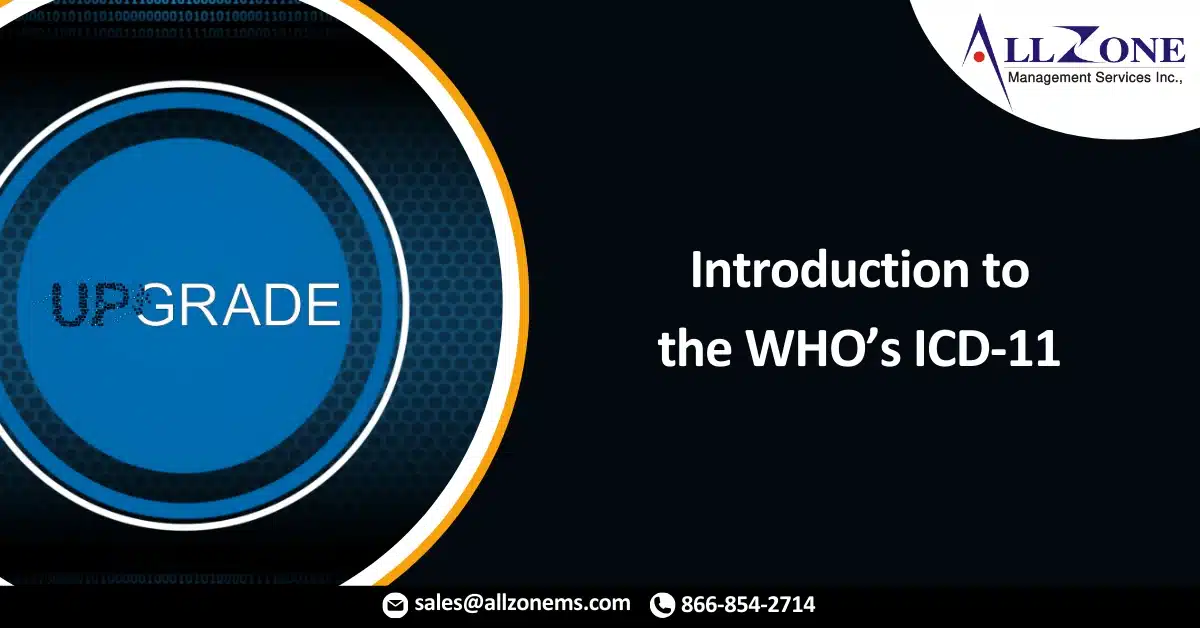Cluster coding is a new feature for coding professionals.
The World Health Organization (WHO) began developing the International Classification of Diseases, Eleventh Version (ICD-11), in 2007, and first released a preliminary version for evaluation and testing in 2016 – ironically, just one year after the U.S. finally adopted a clinical modification of the WHO’s ICD-10 (i.e. ICD-10-CM).
The World Health Assembly has since adopted ICD-11 for implementation in January 2022. That means ICD-11 is expected to be used for mortality reporting (on death certificates) starting in just a couple months. However, when it might be used for reporting on healthcare claims in the U.S. (replacing ICD-10-CM) is still unknown.
The 11th version of ICD is very different from the 9th and 10th versions that the U.S. modified to create the ICD-9-CM and ICD-10-CM code sets, respectively. New features of ICD-11 include the following:
An entirely new architecture that includes the Foundation Component, an underlying knowledge base from which a subset (or “linearization”) is defined to create a tabular list and alphabetic index;
Over 80,000 entities that point to approximately 17,000 codes in 26 chapters (compared to approximately 14,000 codes in 21 chapters in ICD-10);
Alphanumeric codes ranging from 1A00 to ZZ92.ZZ (minimum of four, maximum of seven characters);
New chapters covering sleep-wake disorders, traditional medicine, and sexual health;
Up-to-date scientific knowledge, for example newly discovered microbes (e.g. COVID-19) and gaming disorders (added to the addictive disorders chapter);
A new coding approach: “cluster” coding, which provides a mechanism to use more than one code, in a cluster, to fully represent a concept; and
Machine computable design, including a unique resource identifier (URI) for each entity and an application program interface.
Cluster coding in particular is a new feature that coding professionals will need to understand. For the first time in ICD, ICD-11 includes a mechanism to post-coordinate codes. Post-coordination is used to link stem codes and/or stem codes with extension codes to create a code cluster. Codes are linked together in a cluster to add details and specificity in order to fully describe a clinical condition, for example to specify anatomical location or the presence of a complication. The ability to post-coordinate codes helps keep the code set organized and provides a way to capture the detail provided without exploding the code set with sometimes hundreds of additional codes to represent every combination. But code clusters also present a unique challenge for implementation.
It appears that we have some time to figure that out, as an implementation date for ICD-11 in the U.S. is still unknown. In response to the World Health Assembly adopting ICD-11, the Secretary of the U.S. Department of Health and Human Services (HHS) tasked the National Committee on Vital and Health Statistics (NCVHS) with evaluating pathways and making recommendations on the adoption and use of ICD-11 in the U.S. In August 2019, the NCVHS subcommittee on standards held an ICD-11 expert roundtable. This meeting was the beginning of the NCVHS ICD-11 transition planning. However, further planning appears to have stalled, as the nation focused on responding to the worldwide COVID-19 pandemic. Recently, in September 2021, the NCVHS issued recommendations to the HHS Secretary advising immediate action to conduct research to evaluate the impact of a transition to ICD-11 and conduct outreach and communication about the transition.
Though the timing remains largely uncertain, it appears that planning for the transition to ICD-11 is underway. And one thing is certain: it’s imperative to monitor ICD-11 planning, since coders may need to prepare differently for ICD-11 than they did for the transition to ICD-10.
For More Information: https://www.icd10monitor.com/introduction-to-the-who-s-icd-11

